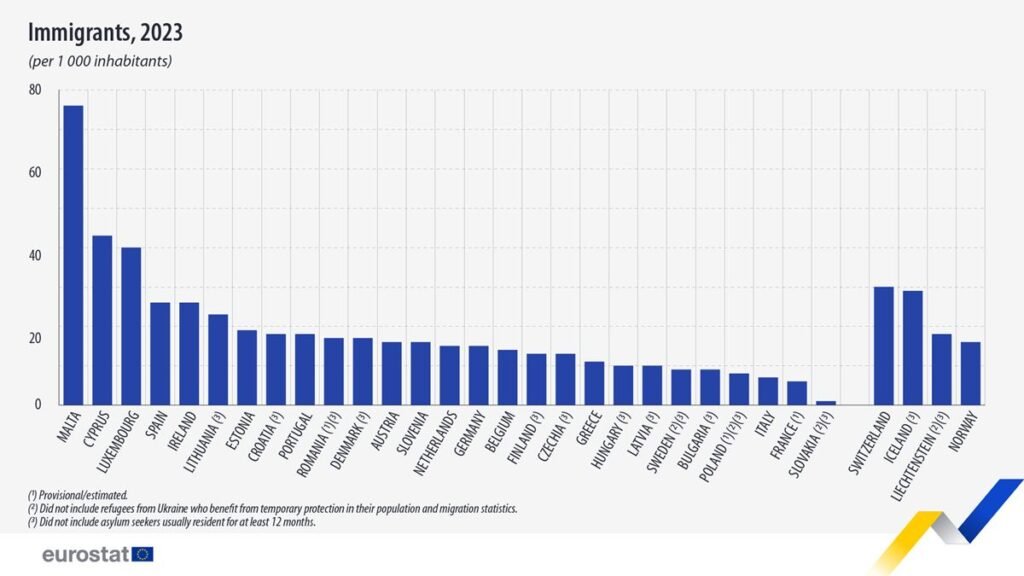Some 4.3 million people immigrated to the EU from non-EU countries in 2023, not including asylum seekers and/or refugees from Ukraine under temporary protection for some countries.

According to the figures from the EU’s statistics agency Eurostat, 1.5 million people also migrated between EU countries. Compared with 2022, the number of people who immigrated to the EU decreased by 17.9%, down from 5.3 million, while the number of people migrating between EU countries remained stable at 1.5 million.
In total, there were an estimated 10 immigrants from non-EU countries per 1,000 residents in the EU in 2023.
Relative to the size of the resident population, Malta recorded the highest rate of immigration from EU and non-EU countries in 2023 (76 immigrants per 1 000 residents), followed by Cyprus (43) and Luxembourg (40).
By contrast, Slovakia registered the lowest rate of immigration, with 1 immigrant per 1 000 residents, followed by France (6) and Italy (7).

In nearly all EU countries, the total number of immigrants from outside the EU in 2023 was higher than the number of immigrants from other EU countries. The only exceptions were Luxembourg (with 85.7% of immigrants from other EU countries) and Slovakia (57.5%).
The highest proportions of immigrants from countries outside the EU were recorded in Czechia (89.2%), Lithuania (88.9%) and Ireland (87.2%).

Thematic section on migration and asylum, Eurostat
Thematic section on international migration and citizenship

